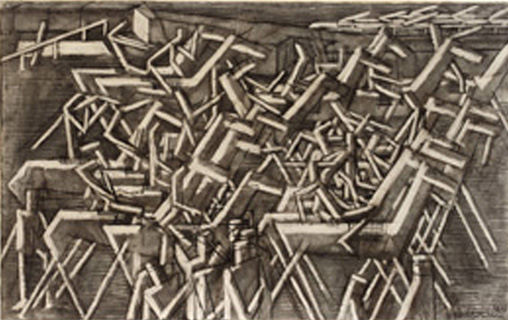More by accident than by design, today’s picture, a drawing of racehorses chosen because this is the Sunday before the Cheltenham Festival, turns out to be a sort of pendant to last week’s Self-Portrait of 1906-7 by Wyndham Lewis. It was created by Lewis’s close friend, David Bomberg, in 1911 – and like Lewis’s work of the time was carried out in a self-consciously avant-garde style, designed to shock and stimulate in equal measure. The drawing was owned by
Bomberg was only twenty-two years old when he drew Racehorses, a work which shows the strong influence of Cubism and Futurism, both in its fractured, highly abstracted forms and its sense of hectic movement. Bomberg shared the Italian Futurists’ enthusiasm for “dynamism”, the term by which they signalled their ambition to galvanise painting and drawing, to disturb the traditional stasis of the visual arts. In this picture, with its multiplied images of schematic horses, seeming almost to stutter across the page in a staccato rhythm, he has employed a method which the Futurists termed “simultaneity”, by representing successive phases of movement in a single image.
Racehorses appears to portray a group of horses and their riders gathered at the start of a race, just before the off. The elevated vantage-point is not that of a spectator – there being no grandstands placed at the start, on English racecourses – but presumably that of the starter himself, up on his podium, preparing to lift the tapes...


